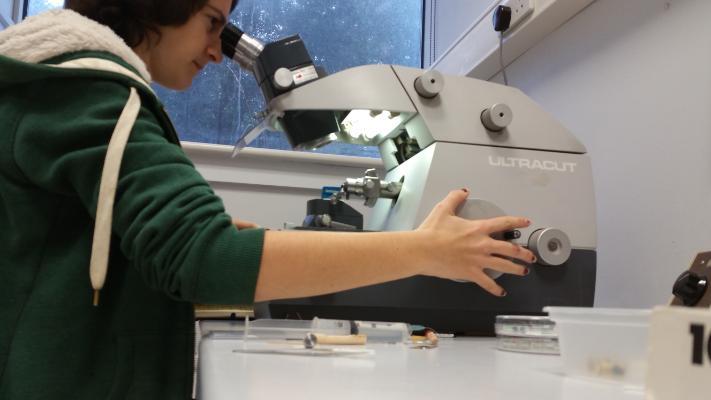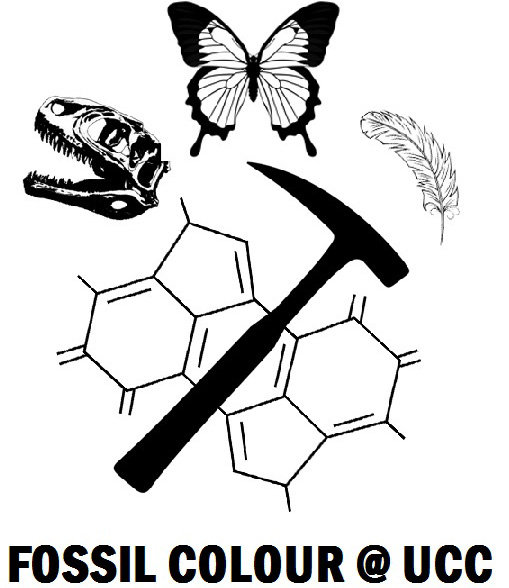2017
18 Dec 2017
The fossil colour research team attended the Friends of the Rotten workshop (as part of the Palaeontological Association’s 2017 Annual Meeting) at Imperial College London last weekend, where Tiffany gave a talk on the origins of mouldic melanosomes.
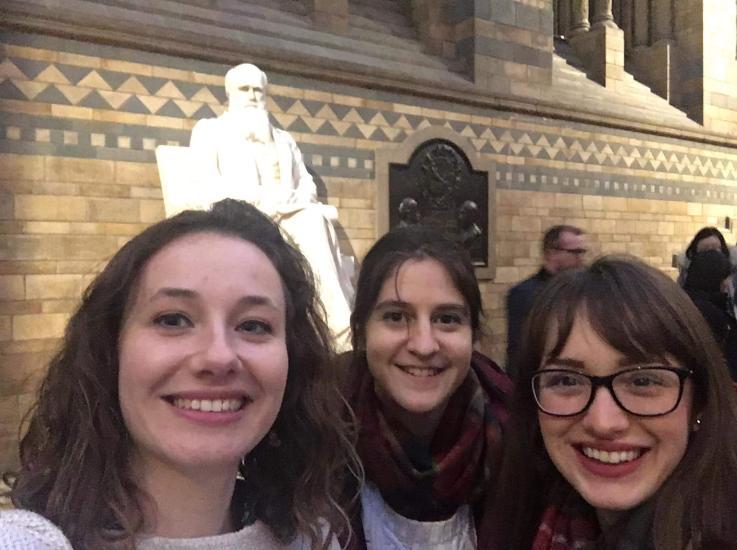
11Dec 2017
Here are Tim and Maria doing some elemental mapping, whilst Chris is looking at lamprey eyes on the SEM.
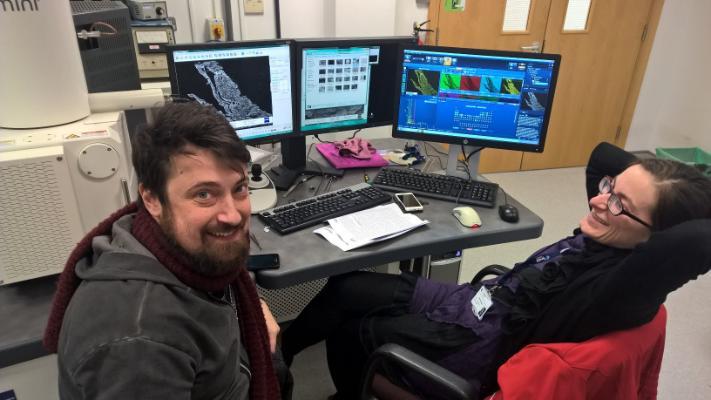
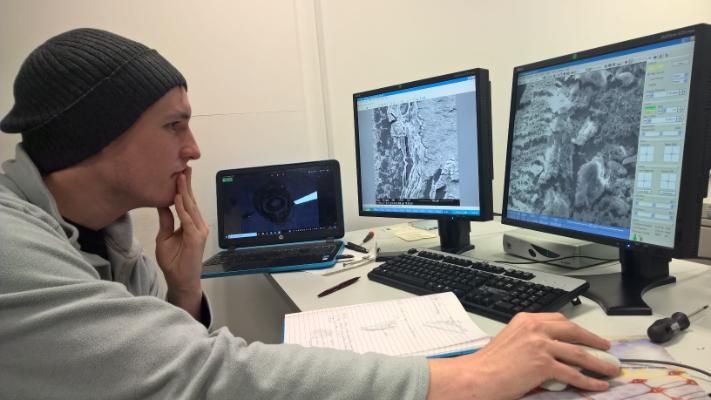
4 Dec 2017
Luke’s search for preserved structural colour in the insect fossil record continues – he has recently been able to examine a range of insect fossils from the Crato formation under the light microscope.
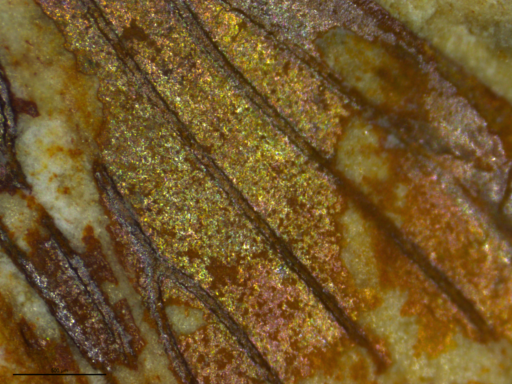
27 Nov 2017
James has started analysis of the images of the Chinese Jurassic Neuroptera (lacewings).

20 Nov 2017
Giliane went to a bog to collect water and sediment (and inopportune crustaceans) for a pilot mineralization experiment.
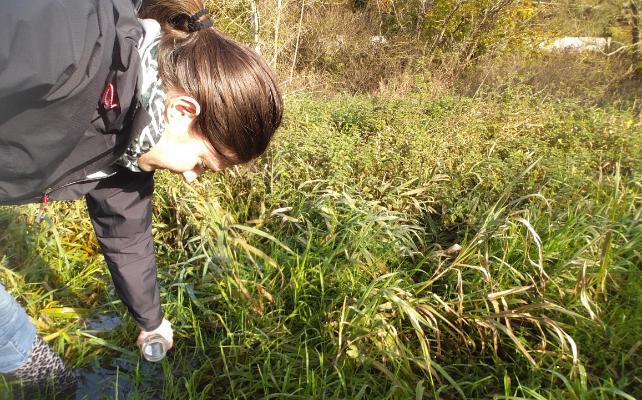
13 Nov 2017
Members of the Palaeo group and undergrad volunteers from the School of BEES putting on a good show at Cork Science Festival!
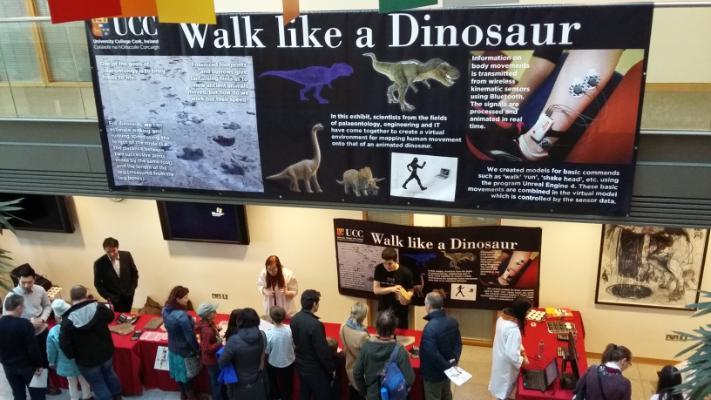
6 Nov 2017
Here is Valentina in the Natural History Museum of Denmark in Copenhagen. She is looking for fossils with evidence of soft tissues!
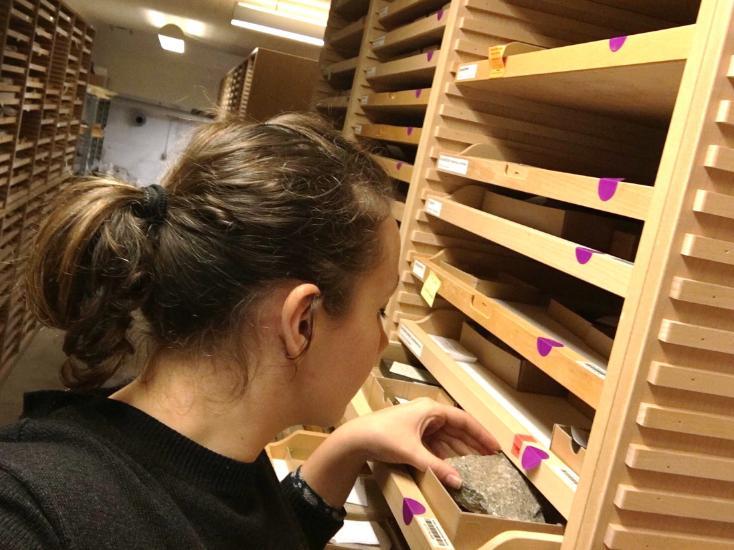
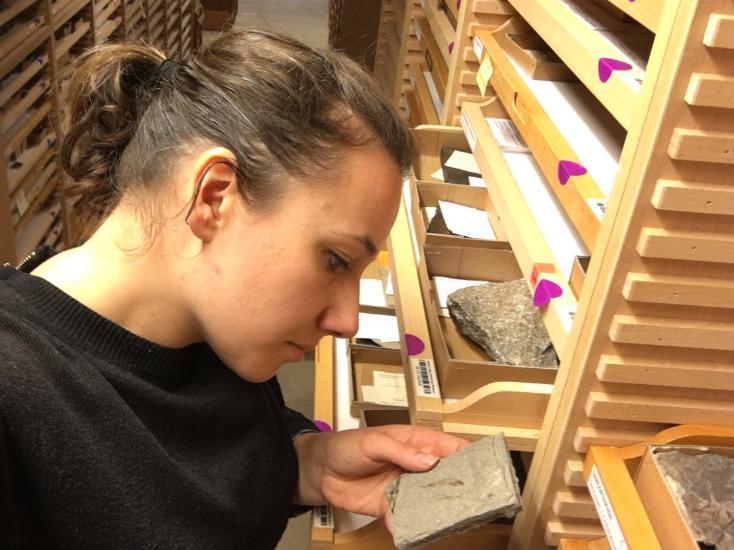
2 Nov 2017
Graduating at the top of her class, Tiffany attended her official graduation ceremony this week in Worcester, UK. She held up the ceremony as she received five awards from the University of Worcester and the Royal Society of Biology! Congratulations Tiffany!
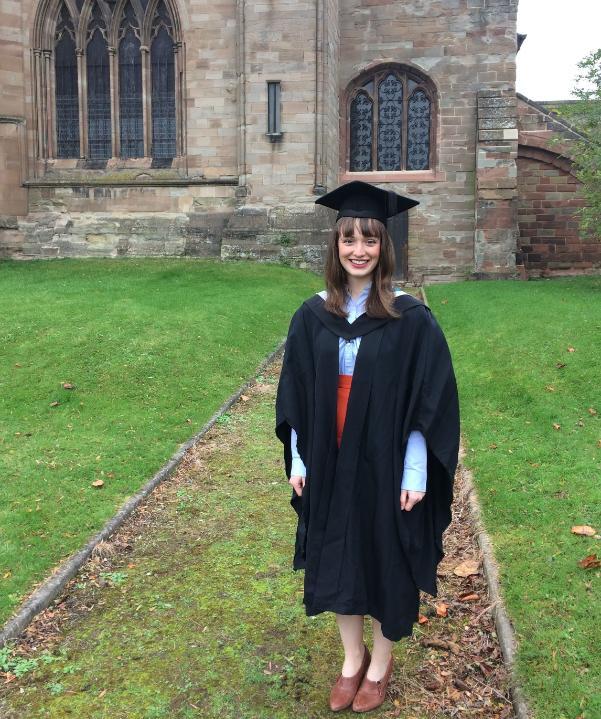
23 Oct 2017
Maria, Chris and Tiffany were at Diamond Light Source, a synchrotron facility in Oxfordshire last week. Here they are running some samples!
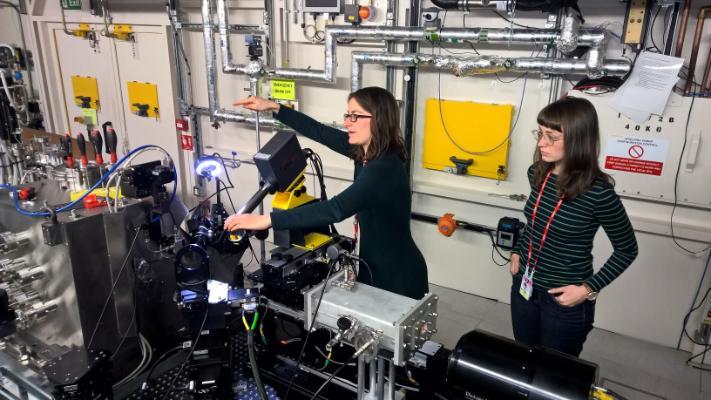
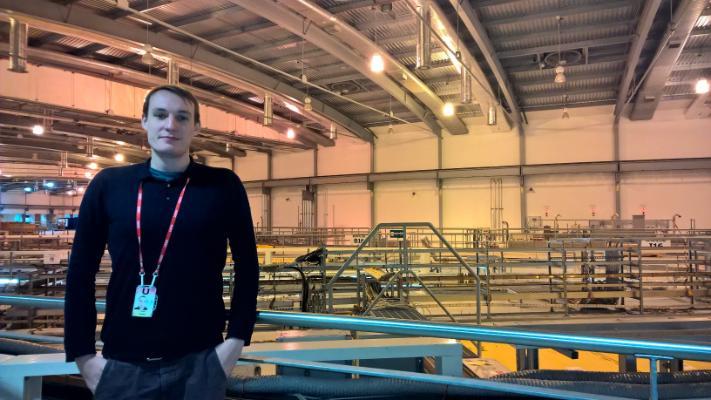
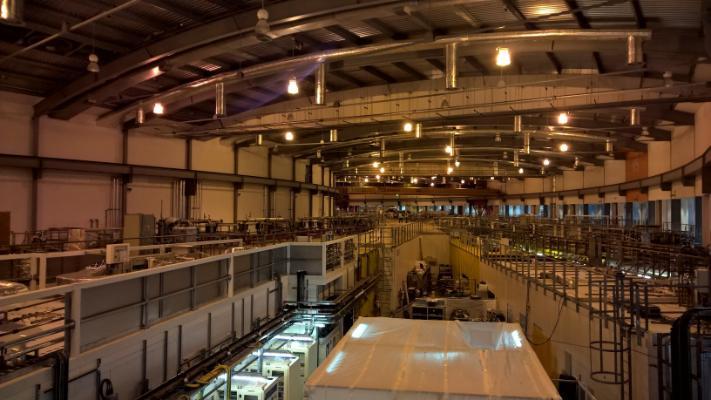
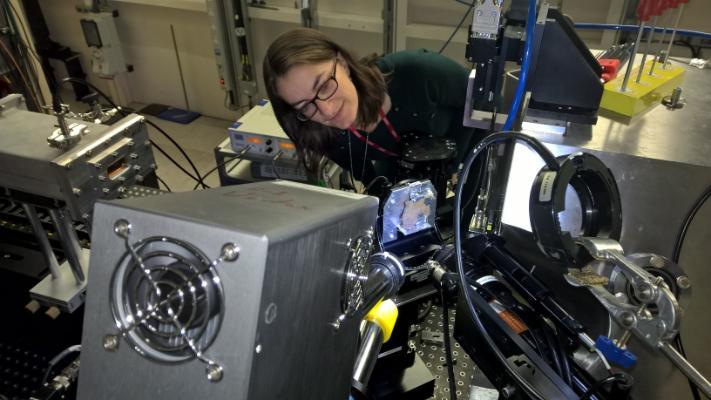
16 Oct 2017
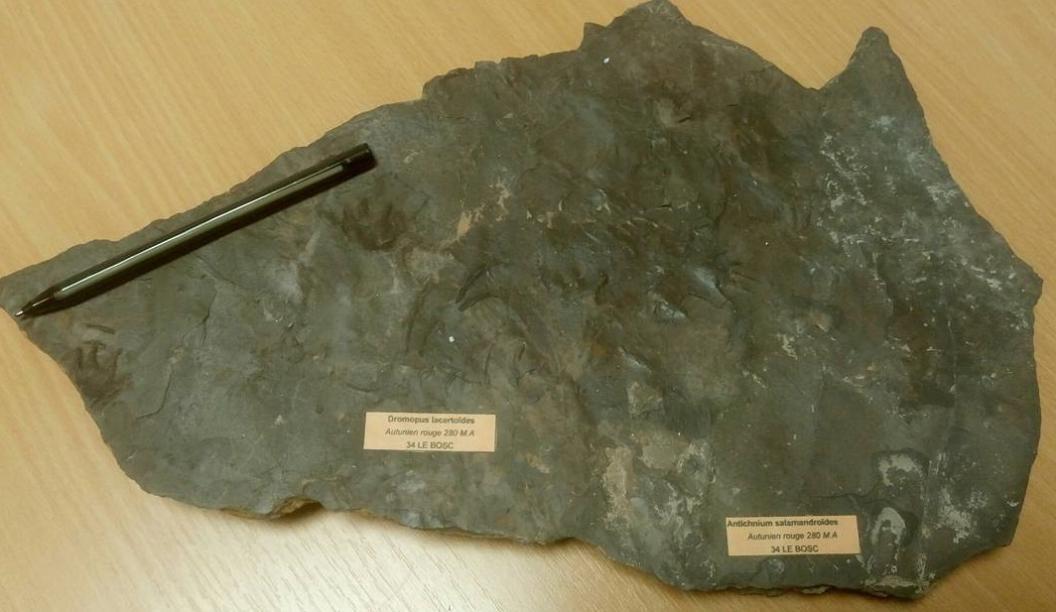
Naomi has been procuring some new fossils for outreach and research purposes – see some examples below!
- Permian reptile fossil footprints from France
- Jurassic Saccocoma tenella from Solnhofen (Germany)
- Jurassic disarticulated echinoids from France;
- Lower Jurassic Acanthochirana from France
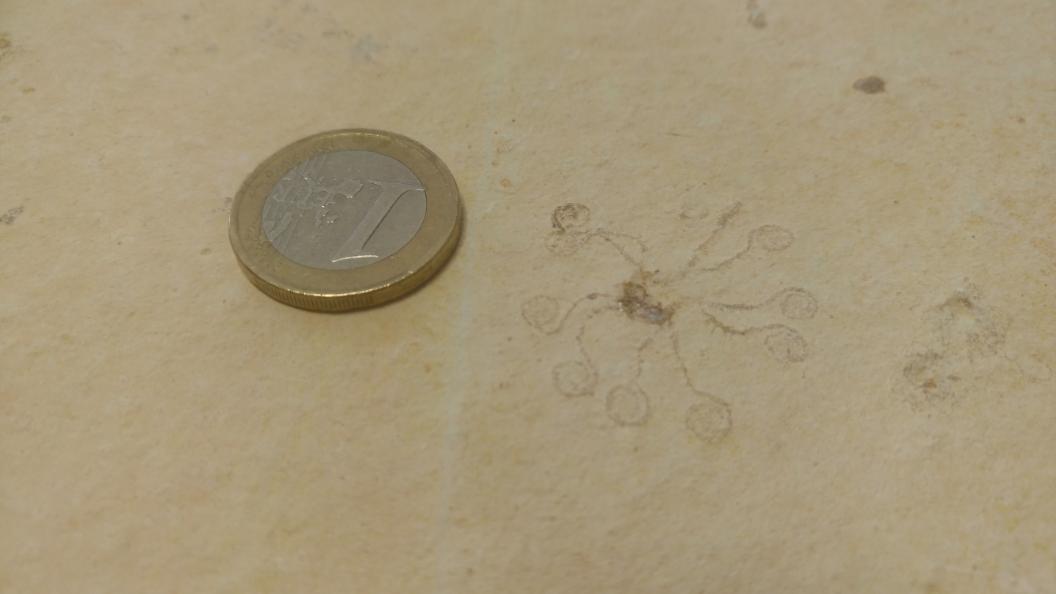
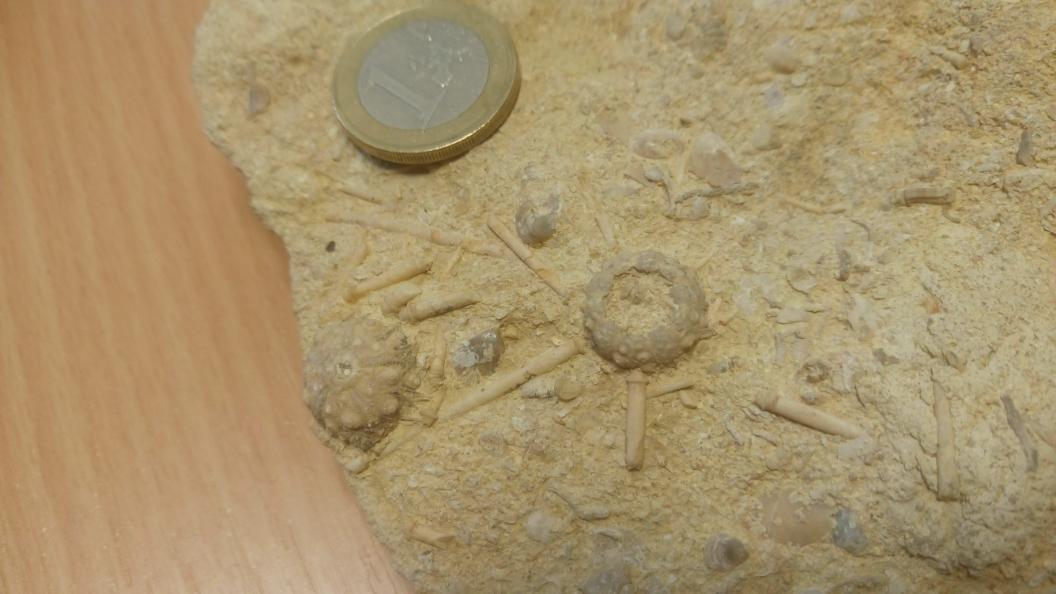
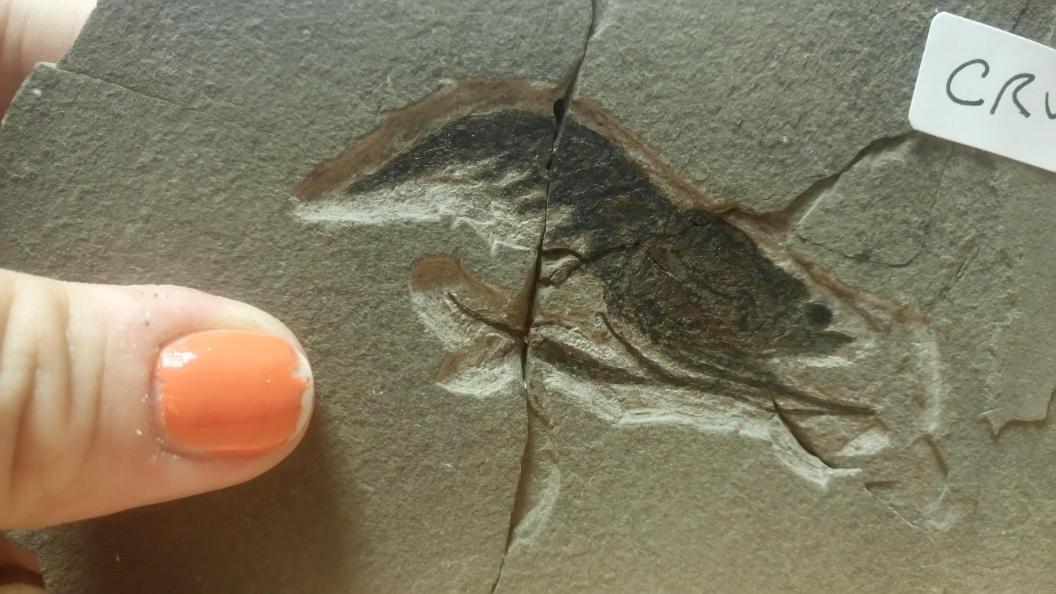
9 Oct 2017
Luke has been working with Professor Bo Wang at the Nanjing Institute of Geology and Palaeontology, Chinese Academy of Sciences to identify the potential for structural colours in Jurassic lepidopteran fossils. Their study aims to provide new insights into the evolution of colour producing nanostructures as well as scale morphology in insects.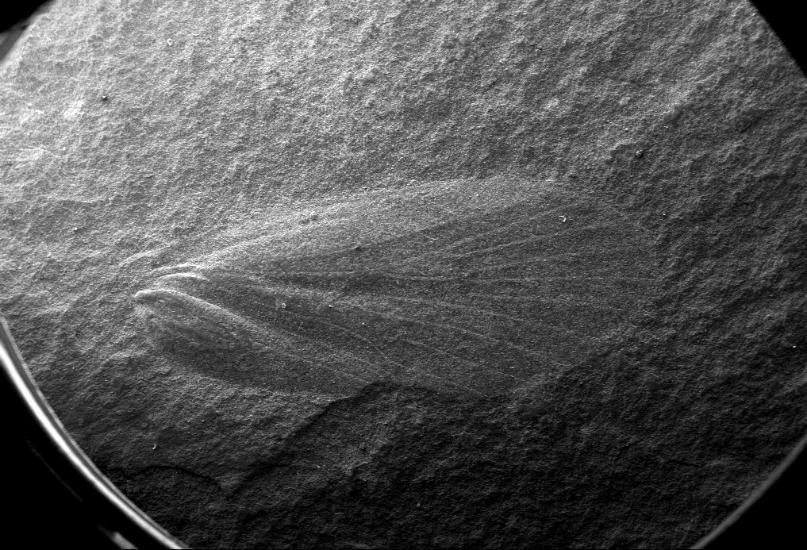
2 Oct 2017
A small selection of fossil insect wings of the order Neuroptera (lacewings) from the Jurassic of China. These wings, along with hundreds more, will be used by James in a morphometric analysis. The analysis will compare the different types of colour patterns preserved on the wings of the neuropteran fauna from the Jurassic of Daohugou, China.

25 Sep 2017
Fresh from Culture Night, Maria jetted off to sunny Scarborough where she joined the PalAss team at the Annual Yorkshire Fossil Festival. As well as helping visitors to the PalAss stand make DIY fossil imprints and play the fossilization game, she took part in the Festival’s Soapbox Science event, armed with a trusty trilobite sidekick.
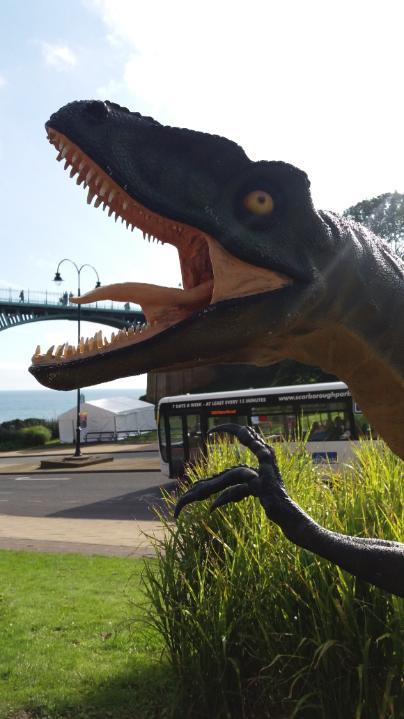
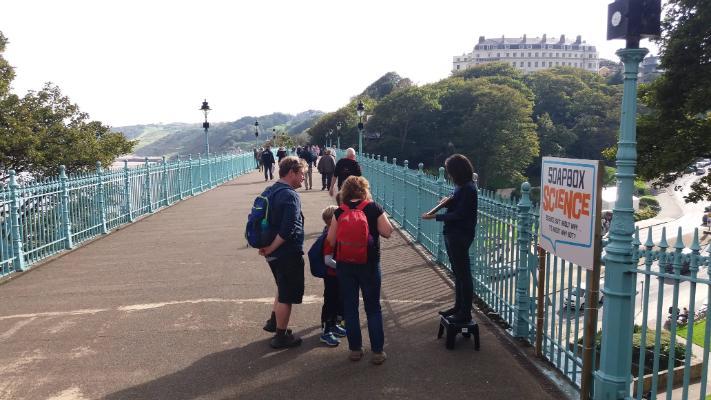
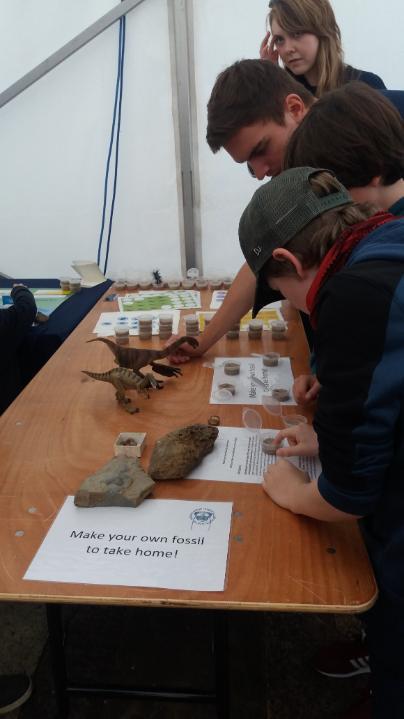
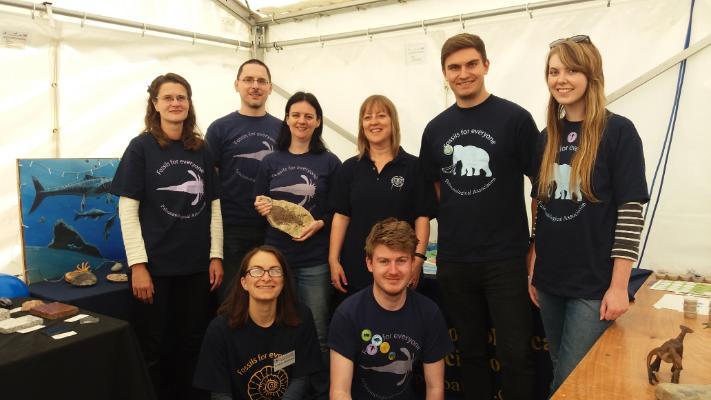
18 Sep 2017
Chemical training in the lab. Giliane has set up a (safe) experiment for us to test whether acid should be placed into water, or should water be placed into acid. We ensured it was the correct way (acid into water!) before Tiffany tried it out!
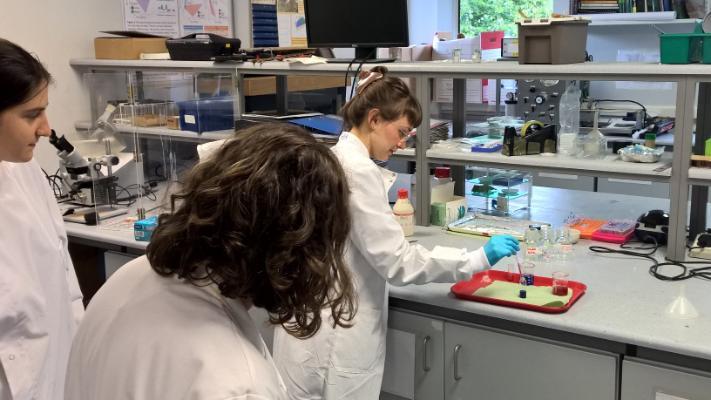
11 Sep 2017
Landmarks and Lifeforms: Linking science and art at the Limerick City Gallery of Art
Maria participated in a panel discussion at the opening of the new exhibition ‘Landmarks and Lifeforms’ by Irish artists Frieda Meaney and Danny Osbourne, chaired by Newstalk’s Éanna Ní Lamhna. The exhibition features prints and installations by Frieda focusing on evolution, change, and transformation, and lava sculptures and vessels by Danny. The panel discussion was very interactive, with lots of participation by the audience, and ranged in topic from origins of the Earth, climate change, and dinosaur evolution to creativity and the common methodical process that lies at the foundation of all scientific and artistic inquiry.
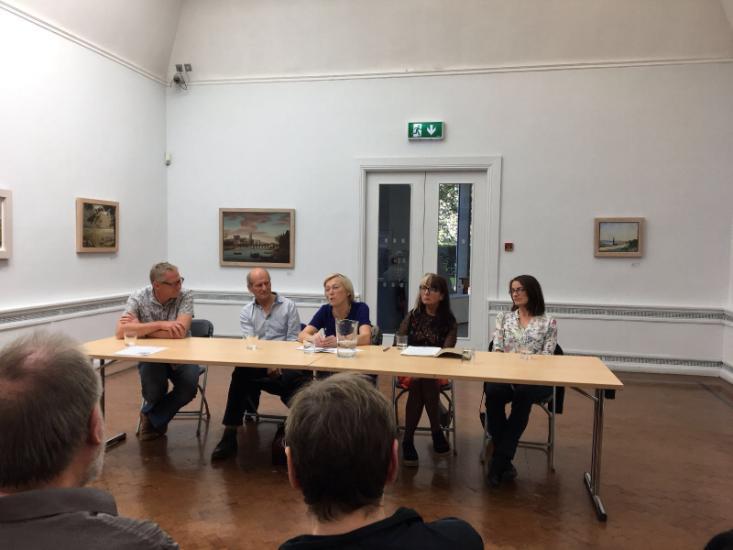
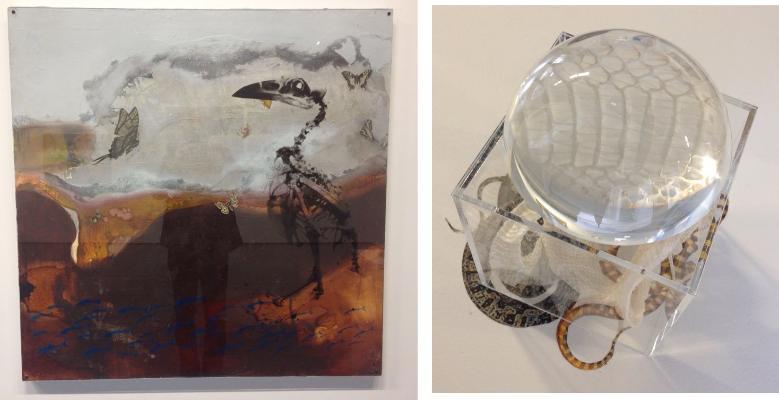
4 Sep 2017
Valentina was at the ToF-SIMS facility in Manchester, to learn how to use the instrument as well as analyzing some melanin samples. She also visited Manchester Museum!
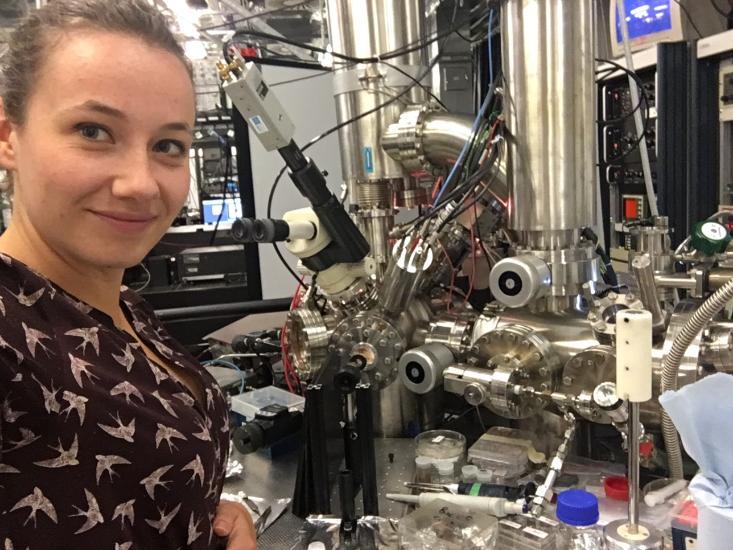
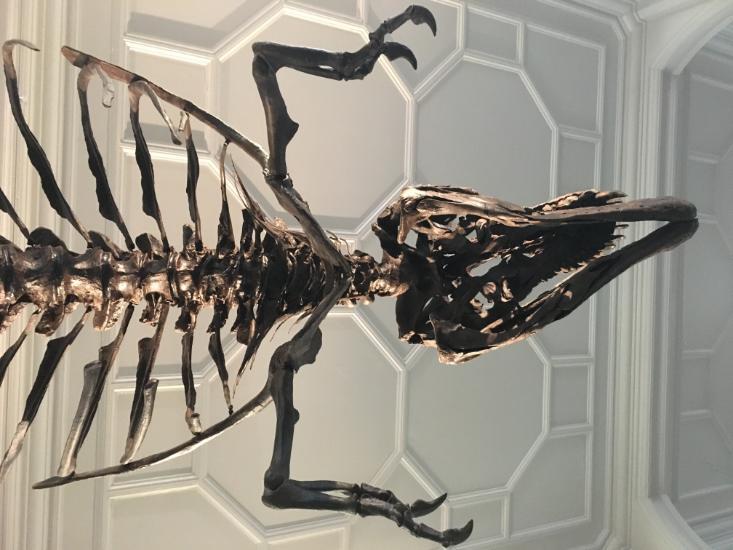
28 Aug 2017
Tiffany, our new PhD student, is extracting feathers from a common kingfisher (Alcedo atthis) (that was found dead!) for oxidation and decay experiments.
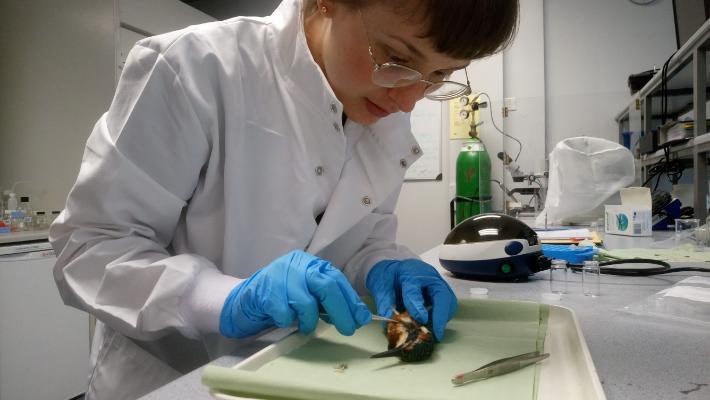
21 Aug 2017
This is a histological section through a cuttlefish (Sepia officianalis) ink sack, the black-stained cells can be easily identified. Although it has been known for millennia that cuttlefish and other cephalopods produce ink, exactly how they produce melanin in their tissues is poorly known. Tim is currently looking into how and where melanosomes are produced in cephalopod tissue.
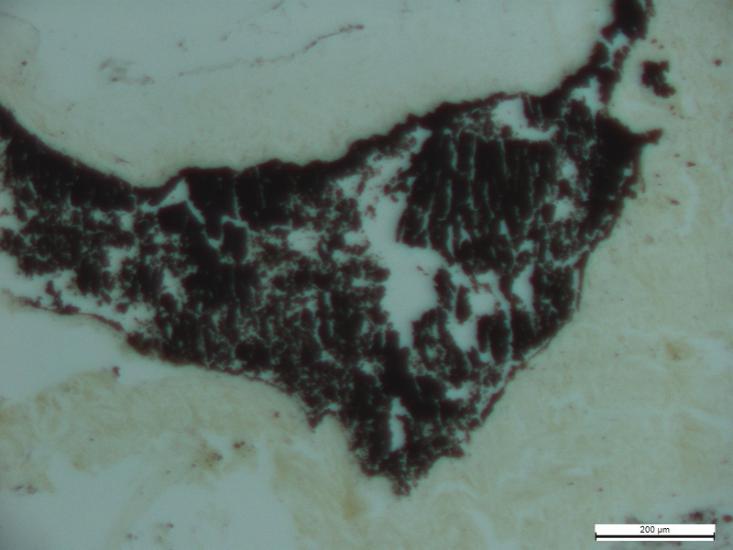
14 Aug 2017
Posers with posters in Paris! Nidia, Valentina and Chris at Goldschmidt 2017.
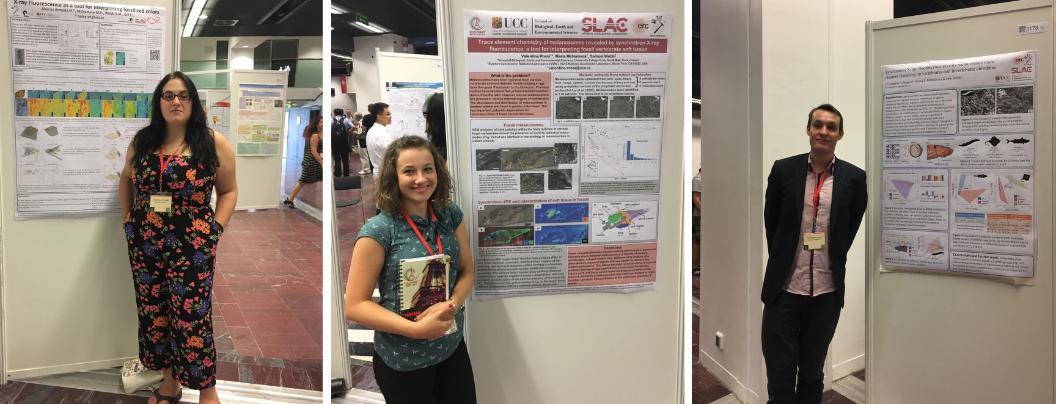
7 Aug 2017
Adrian has been splitting mudstones from the Daohugou Lagerstätte: pictured here are an abundance of conchostracans as well as some very nicely preserved plant material.
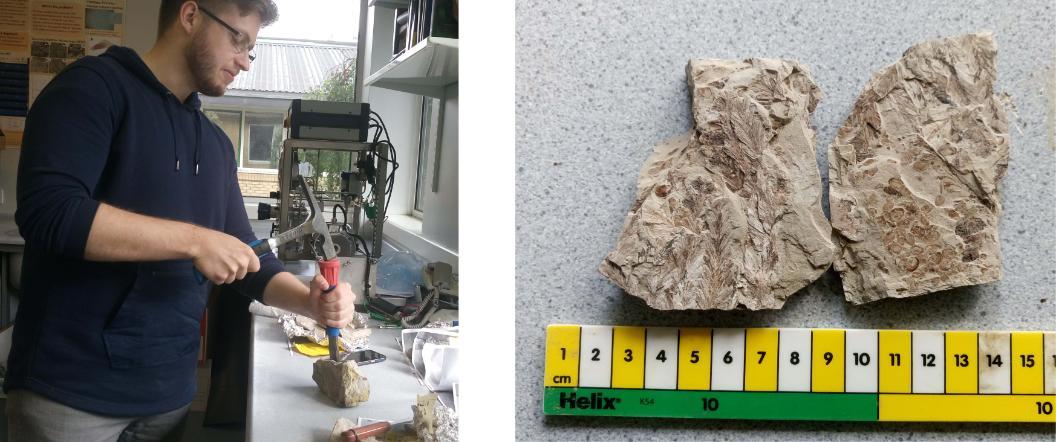
31 Jul 2017
Tim’s current research aims to elucidate the nature and distribution of pigments in cephalopod molluscs. Using controlled sets of decay experiments, he is testing the robustness of these pigments to fossilization and what the preservation of these pigments could tell us about extinct taxa.
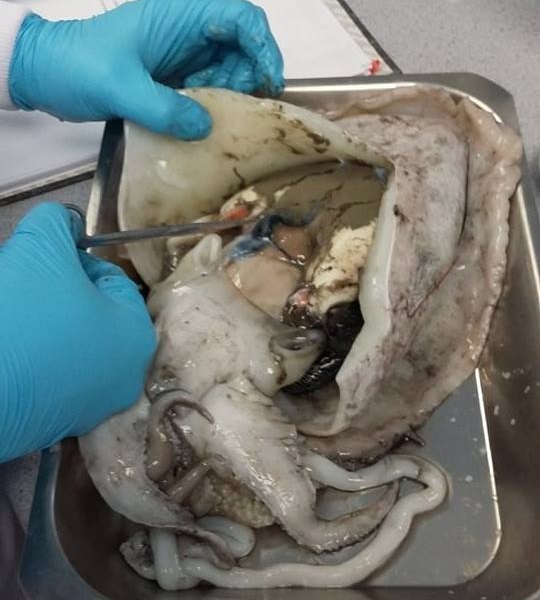
24 Jul 2017
During a visit to his old lab in the physics department at the University of Exeter, Luke performed optical measurements to determine the angle-dependency of the circularly polarised reflectance from some of Giliane’s beetles.
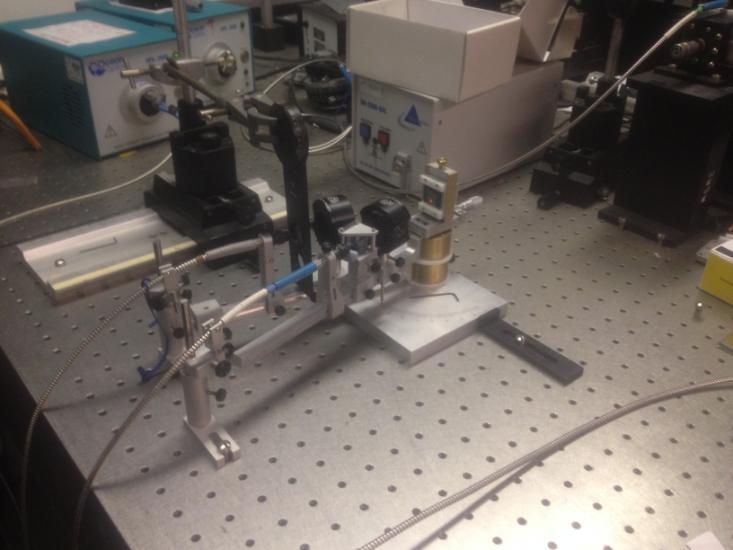
17 Jul 2017
Chris is dissecting the eye of a lamprey under the microscope, by separating the iris at the front of the eye from the choroid at the back. The long strand coming from the eye (as seen on the screen) is the lamprey’s optic nerve.
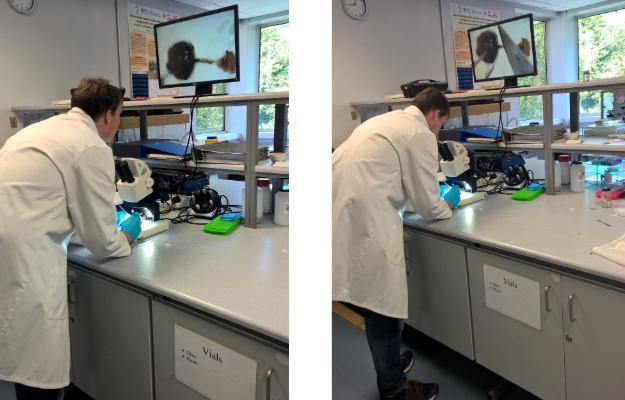
10 Jul 2017
James on a visit to Beijing, China (Capital Normal University), searching the collections and imaging fossil insects with preserved colour patterns from the Middle Jurassic, Daohugou Lagerstätte.

3 Jul 2017
Giliane went to Dublin for a demo of a new high-spec, large-chamber EDS-based micro-XRF system, and tested the accuracy of the chemical analysis on a fossil cephalopod.
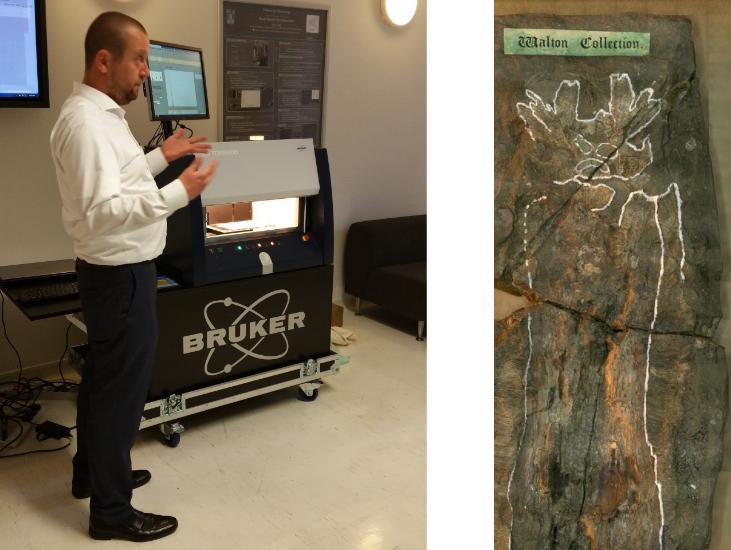
26 Jun 2017
Some of the research group were recently in China doing fieldwork. Here is Valentina with the mountains of Inner Mongolia, and also acting as a human scale surrounded by an alternation of siltstone-mudstone and sandstone, typical of an alluvial fan deposit (age: Late Jurassic).
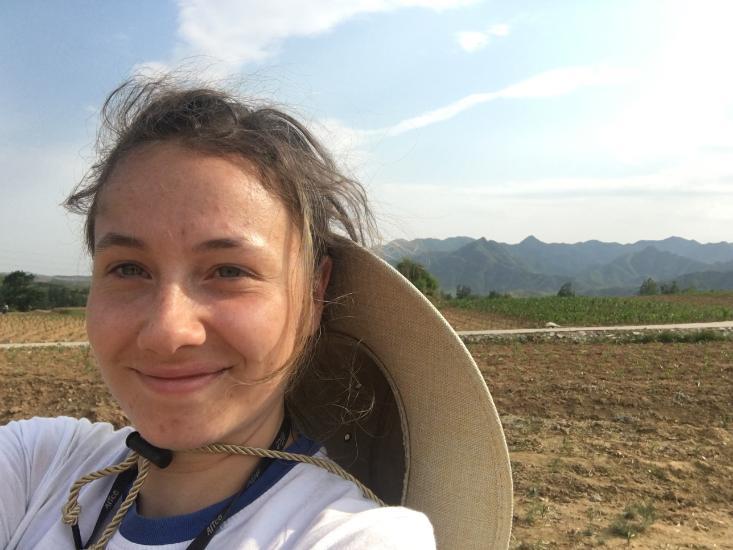
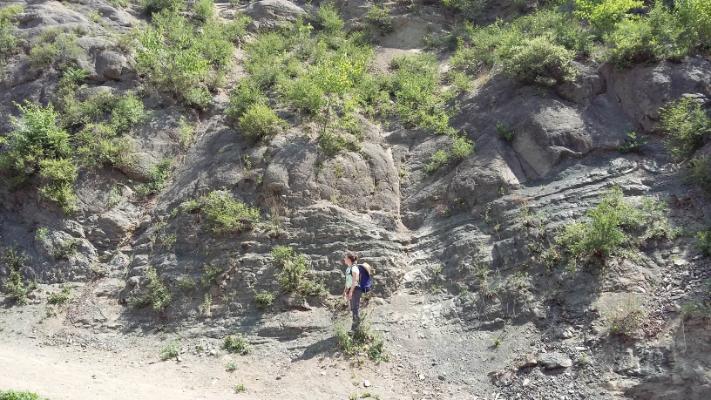
19 Jun 2017
Nick captured this lovely shot of some Greek stratification!
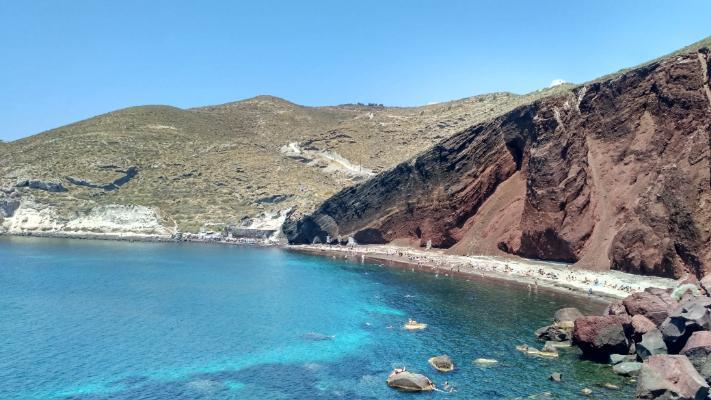
12 Jun 2017
The Chair of Geology, Prof. Andy Wheeler, at the School of Biological, Earth and Environmental Sciences’ recent Research Day at the new MaREI Centre, speaking about the vast range of work Maria and her team accomplish at the School!
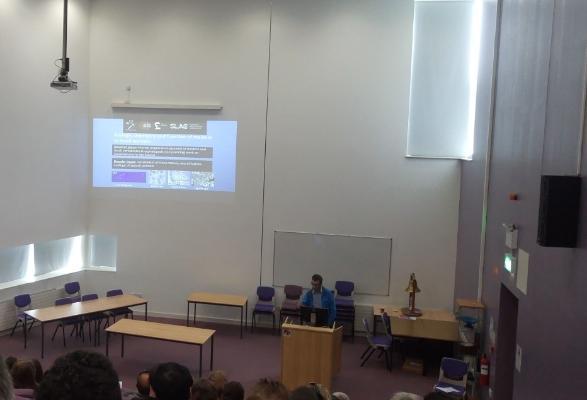
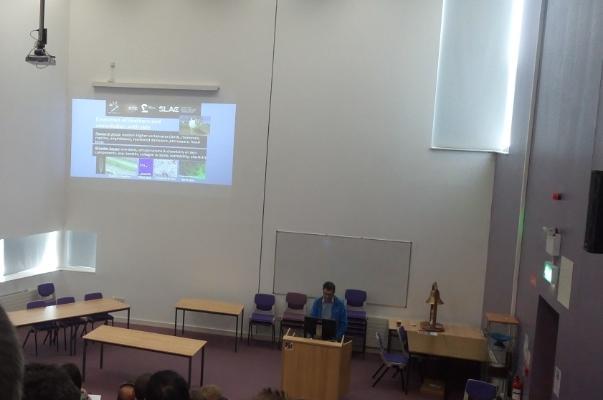
6 Jun 2017
Nidia has been doing ladybird puzzles after 900 hours of tumbling!
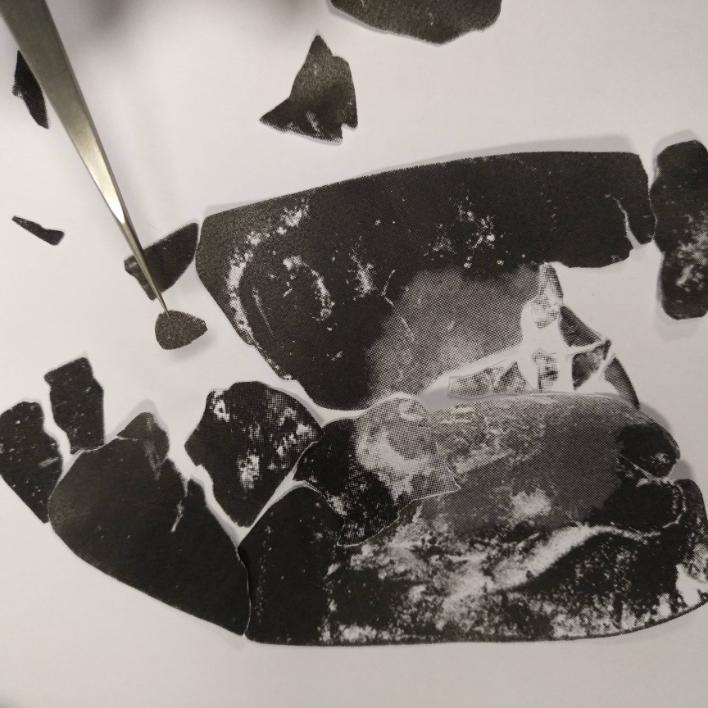
29 May 2017
Maria is trying out our new ultramicrotome for the first time!
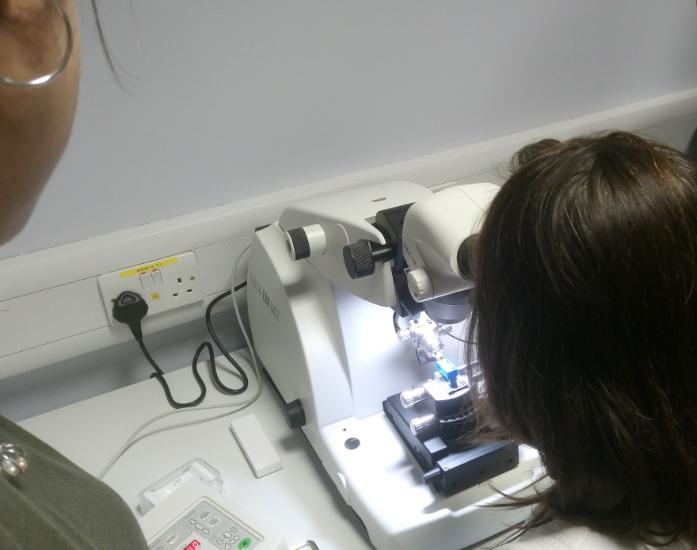
22 May 2017
Maria, Chris and Giliane travelled to the University of Manchester recently to use the ChemiSTEM facility.
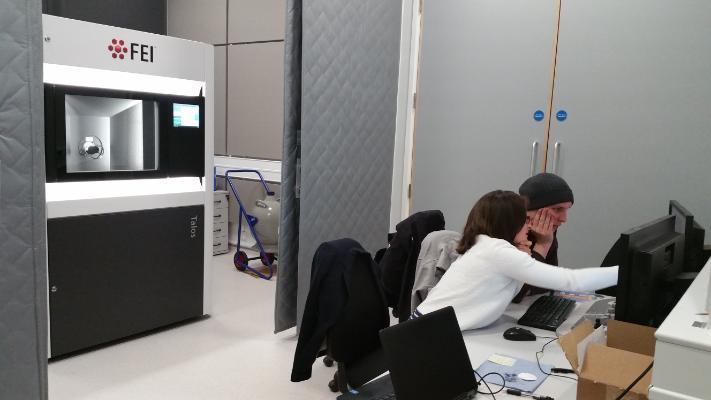
15 May 2017
Luke has been surveying fossil beetle samples under the microscope. The goal is to find evidence for both the preservation of lepidote structures and iridescent colour indicating the presence of underlying photonic crystal morphologies.
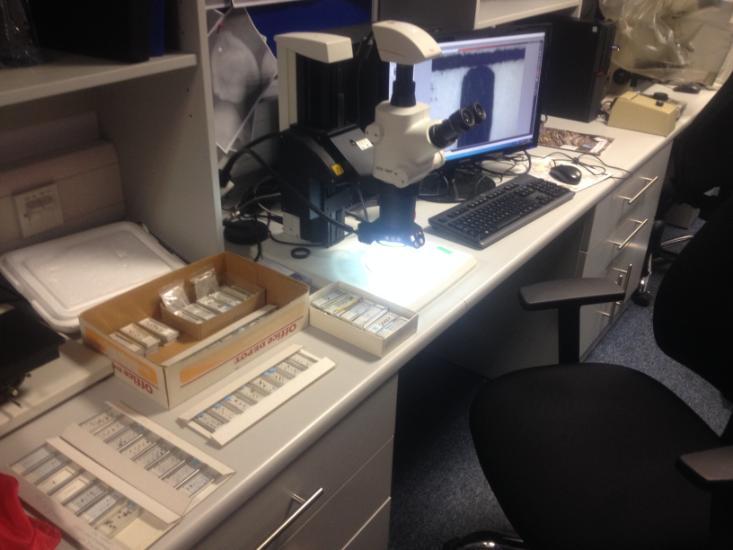
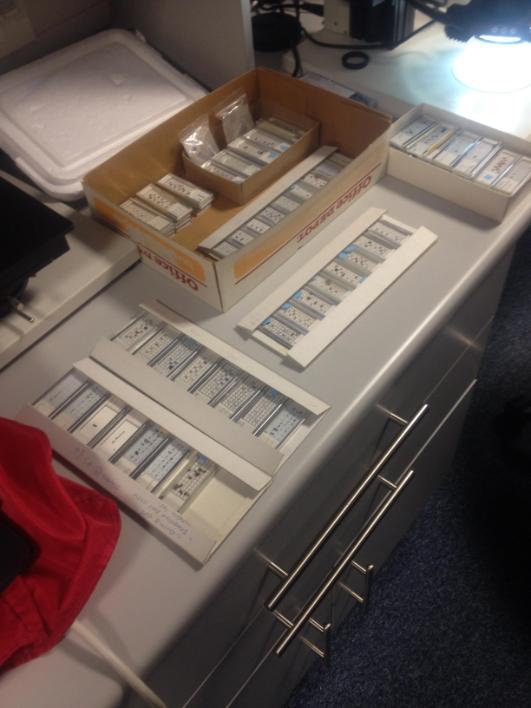
8 May 2017
James visiting the collections at the research station at Messel, Germany. Looking for fossil insects with preserved colour patterns.
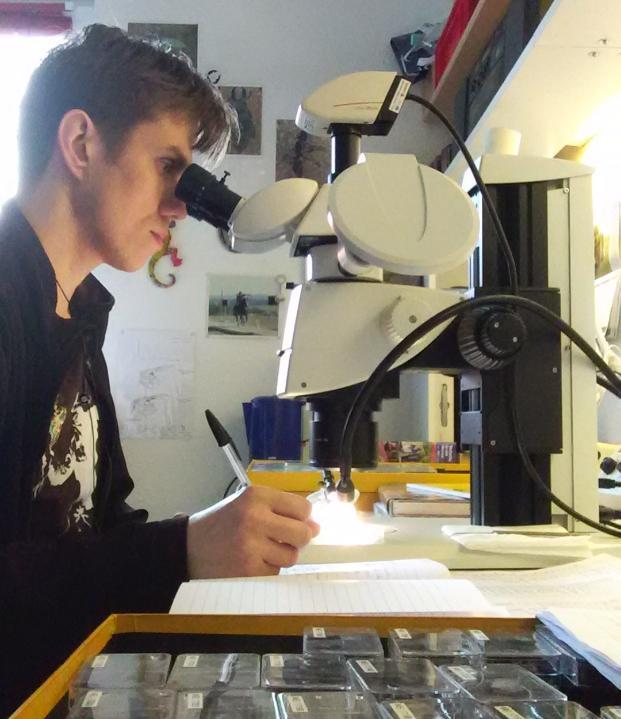
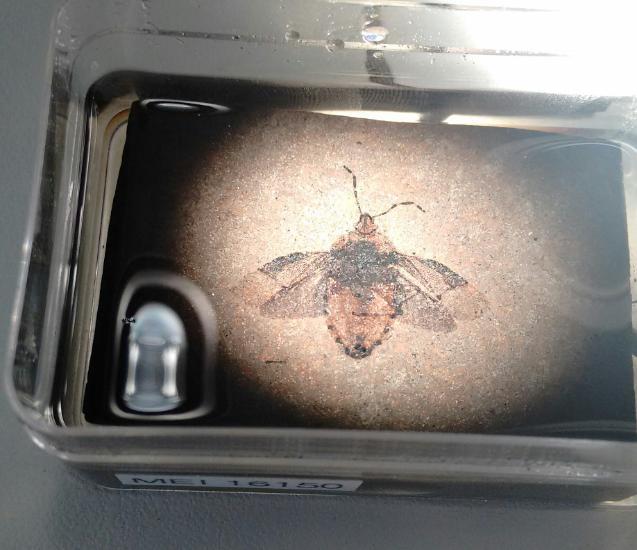
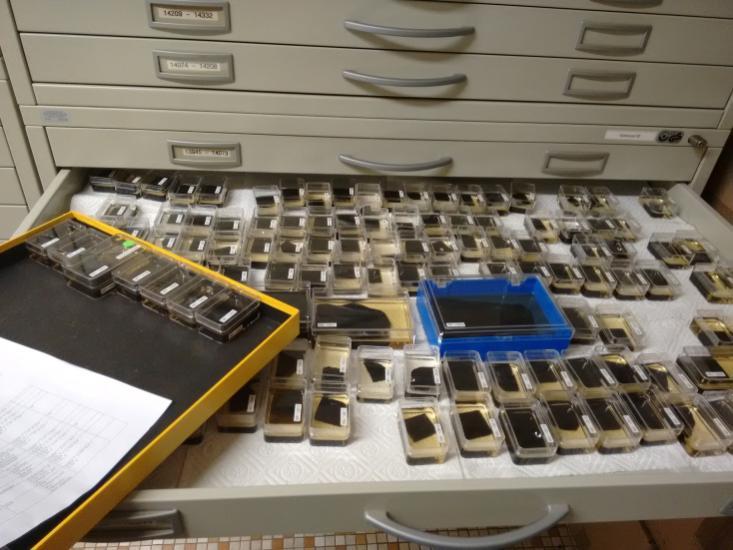
2 May 2017
Maria delivering an interactive lecture to local schools as part of the Cork Lifelong Learning Festival 2017.
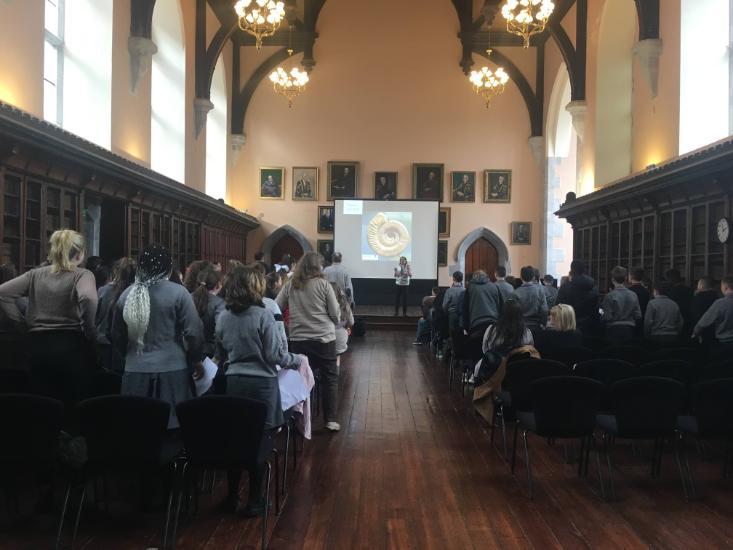
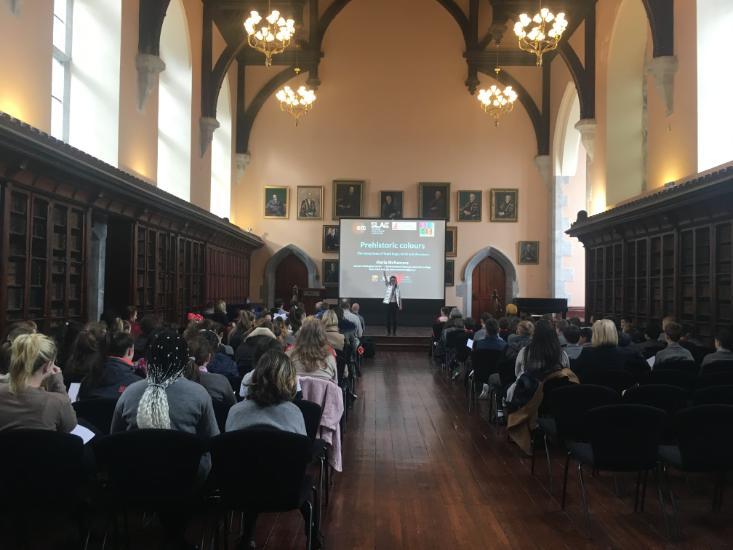
24 Apr 2017
Angular-dependent reflection experimental setup used by Giliane for the characterization of iridescent beetles.
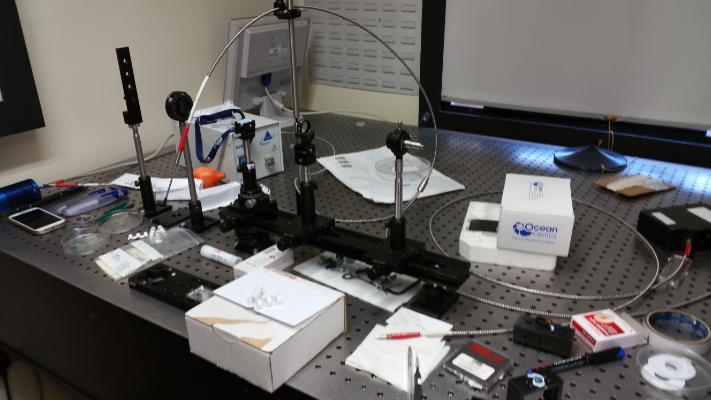
17 Apr 2017
Valentina was recently in Dingle, Co Kerry on a fieldtrip with Maria’s second year students, and came across some Silurian trace fossil burrows and desiccation cracks.
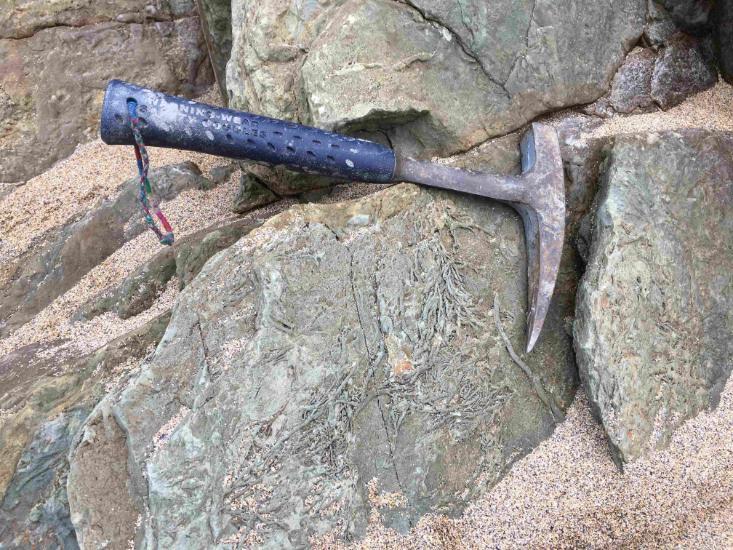
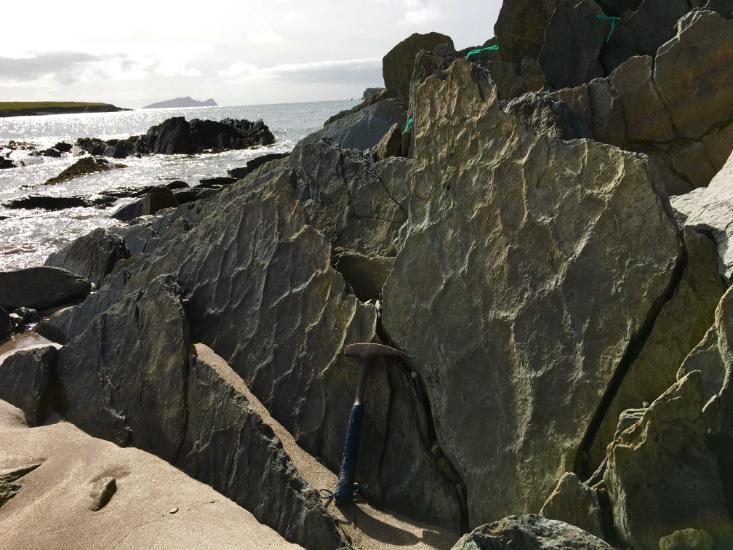
10 Apr 2017
Naomi is helping to prepare Valentina’s samples before they are sent for analysis!
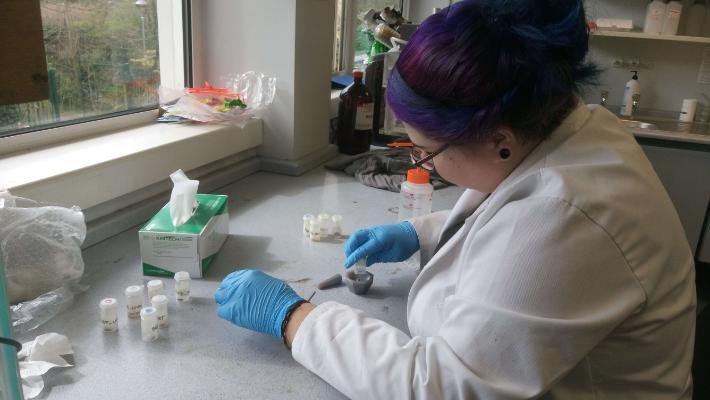
3 Apr 2017
Do you ever get the feeling you’re being watched?
These are the eyes of Octopus vulgaris!
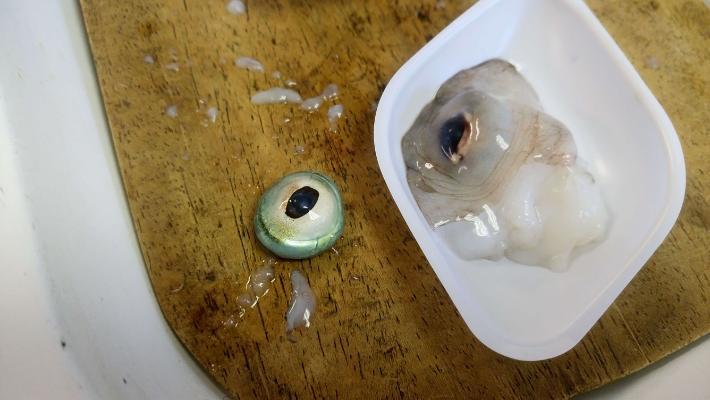
27 Mar 2017
Some exciting results on Nidia’s chemical analyses!
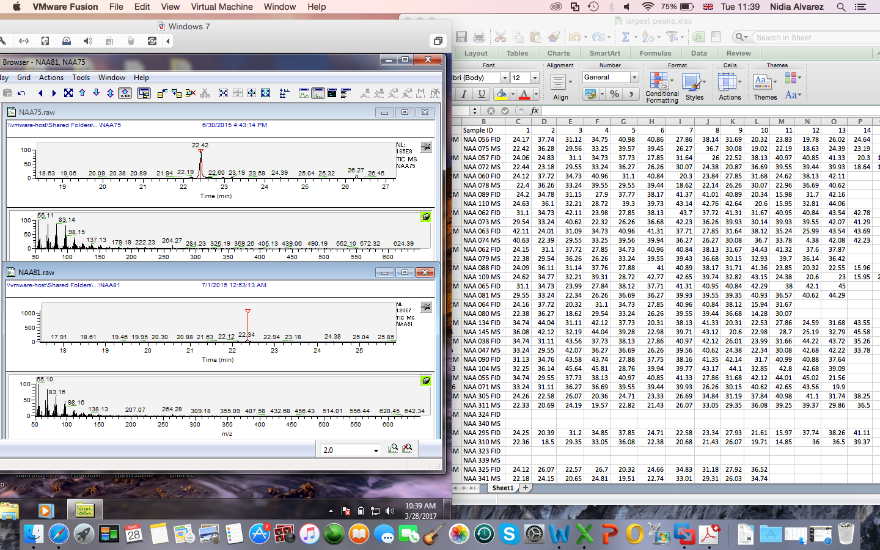
20 Mar 2017
Valentina and Chris are looking exceptionally happy during dissections!
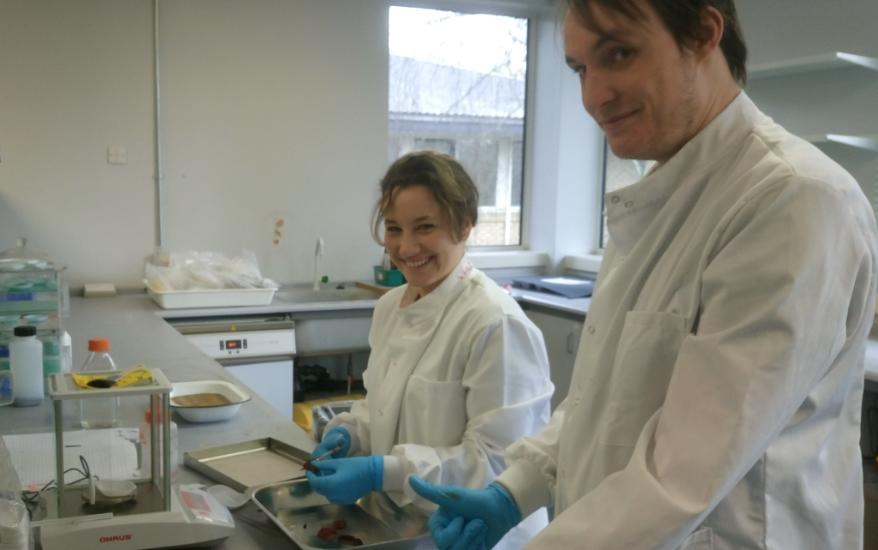
13 Mar 2017
Chris has been learning how to use the TEM.
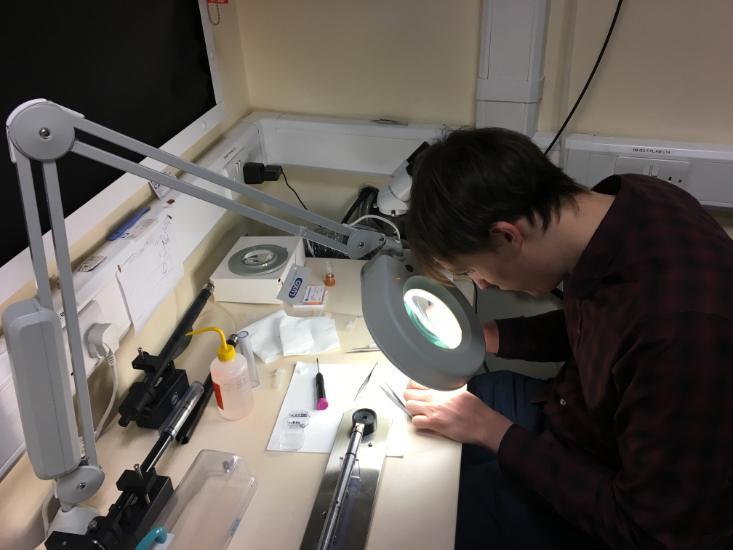
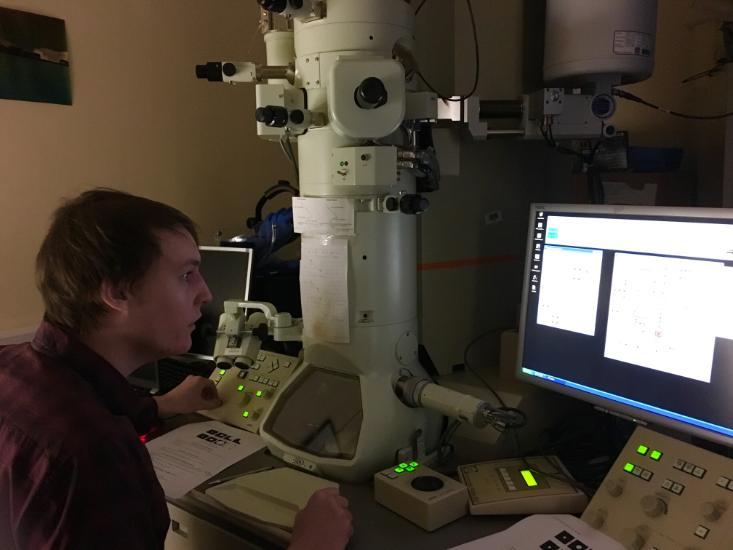
6 Mar 2017
Valentina got an honourable mention for her talk at the IGRM!
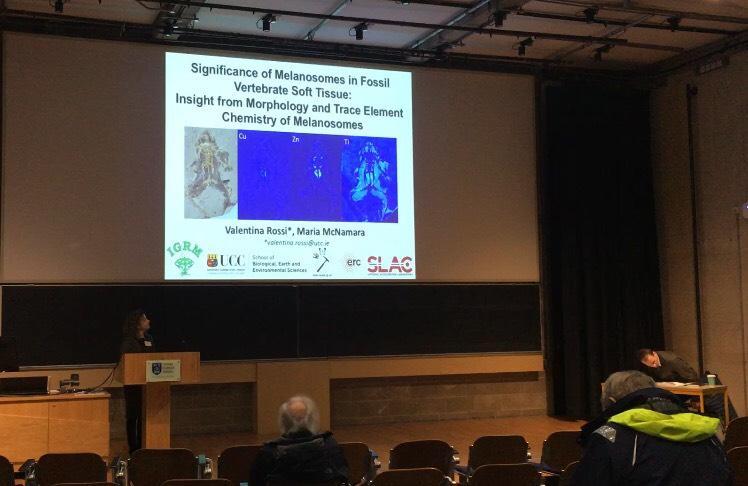
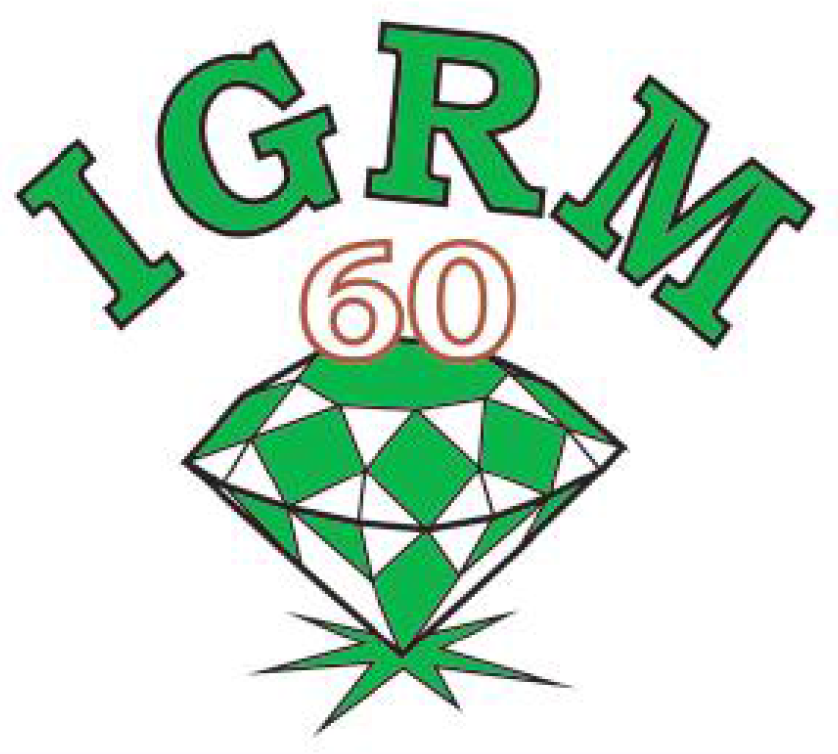
27 Feb 2017
Naomi and Giliane are performing sulfurization experiments.
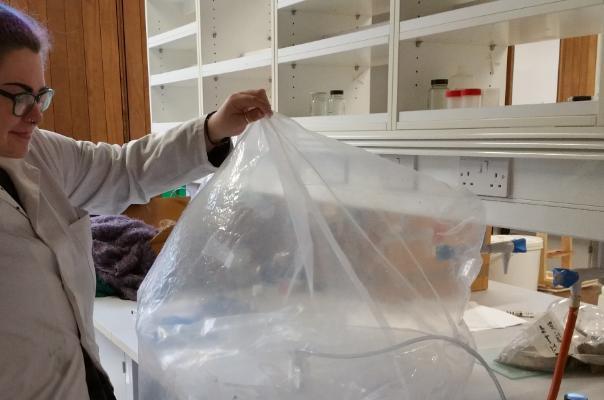
20 Feb 2017
Here is another procedure to stain histology sections – this one is automatic!
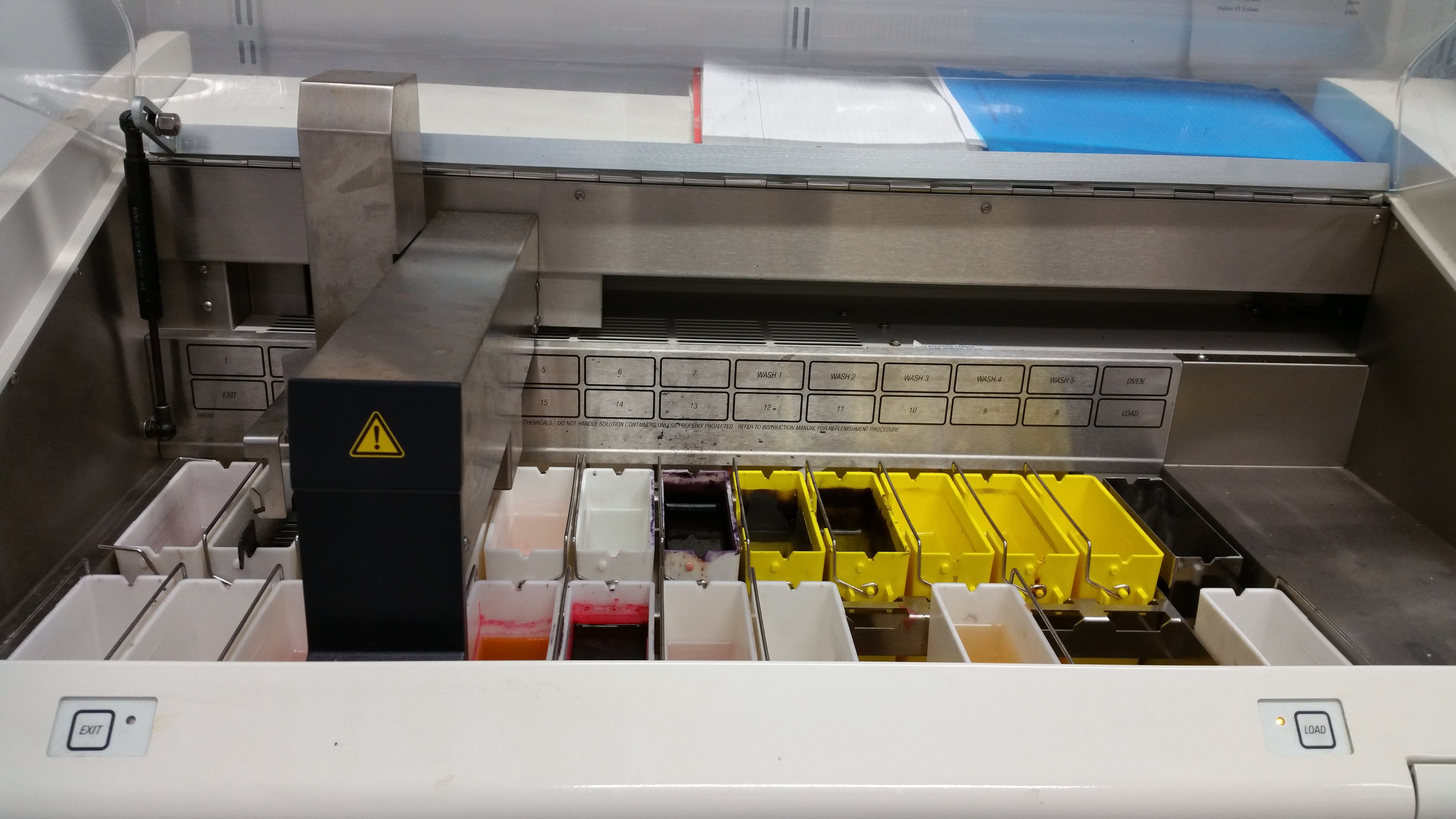
13 Feb 2017
Valentina’s histology samples are undergoing the Fontana-Masson staining procedure to prepare the sections.
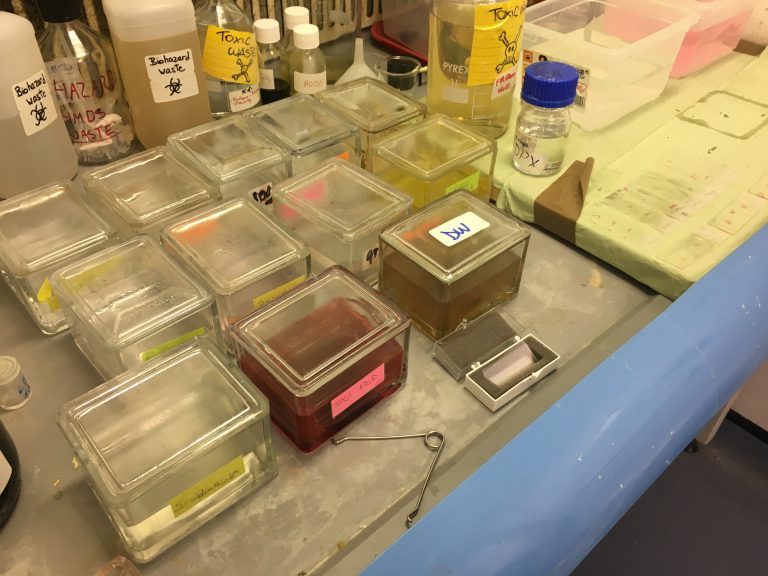
She will then analyse them to calculate the amount of melanin within each sample!
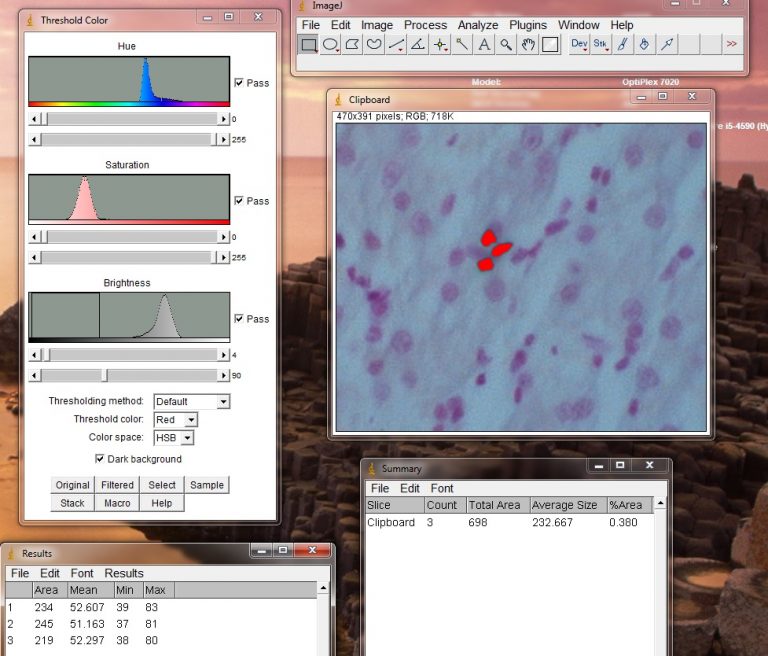
6 Feb 2017
Maria was invited to give the first Quercus lecture of 2017, titled ‘Beyond the lab: making science accessible to all’. UCC’s Quercus students are recognised as some of the most talented in the university; the the Quercus Talented Students’ Programme aims to support and promote excellence in academia, sport, creative and performing arts, active citizenship and innovation/entrepreneurship. The goal of the Quercus lecture series is to inspire students, and staff, by presenting thought-provoking lectures by some of UCC’s most inspiring academics. Please see here for a video of the talk. Photo credit: Dr Benjamin Gearey, Department of Archaeology, University College Cork.
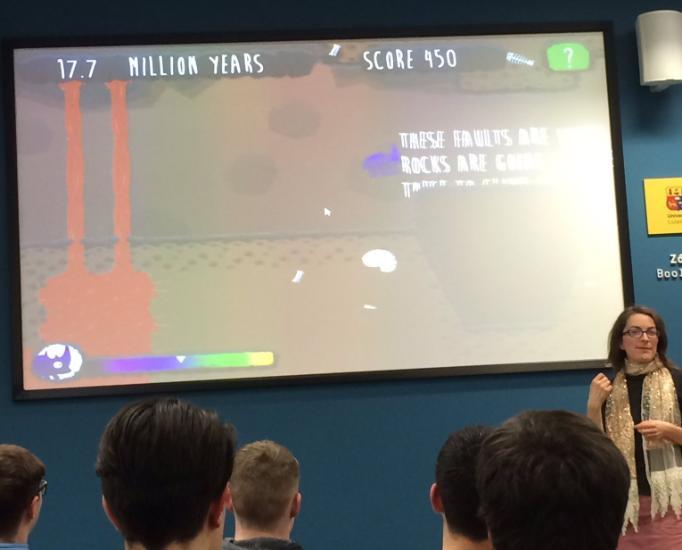
30 Jan 2017
Saoirse has been studying the morphology of fossilized feathers with the aid of some of the artificially fossilized feathers that she has created in the lab.
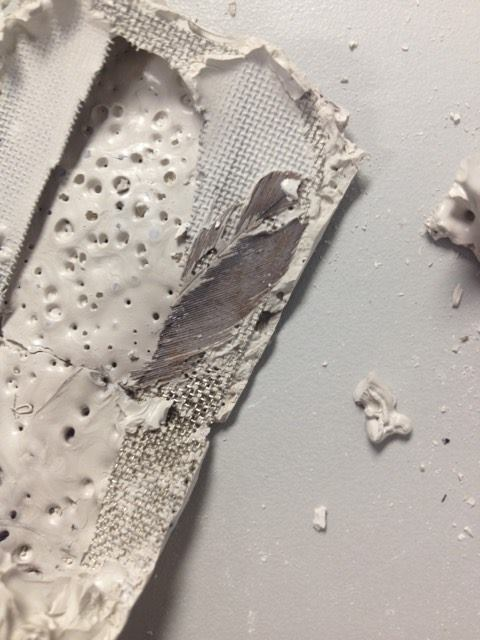
23 Jan 2017
Nidia’s first tumbling experiments are done, all dried up and ready to analyse. Only a *few* hours of picking through sediment ahead!
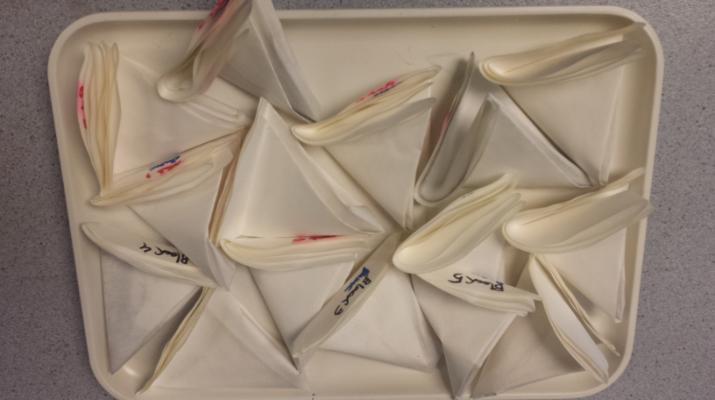
16 Jan 2017
Some of the palaeontology research group went to the BT Young Scientist competition during the weekend, where we displayed our own exhibit “Walk Like A Dinosaur”. This project was created by palaeontologists in UCC’s School of BEES, UCC’s School of Engineering and UCC’s Department of Computer Science. A sensor was attached to the legs of visitors to our stand, which was used to estimate their speed whilst walking / running, and what species of dinosaur this was equivalent to! Each member of the public that participated received a personalized talk about their species. We also brought along some trilobite fossils, an ammonite fossil, a fossilized Megalodon tooth and a cast of Microraptor!
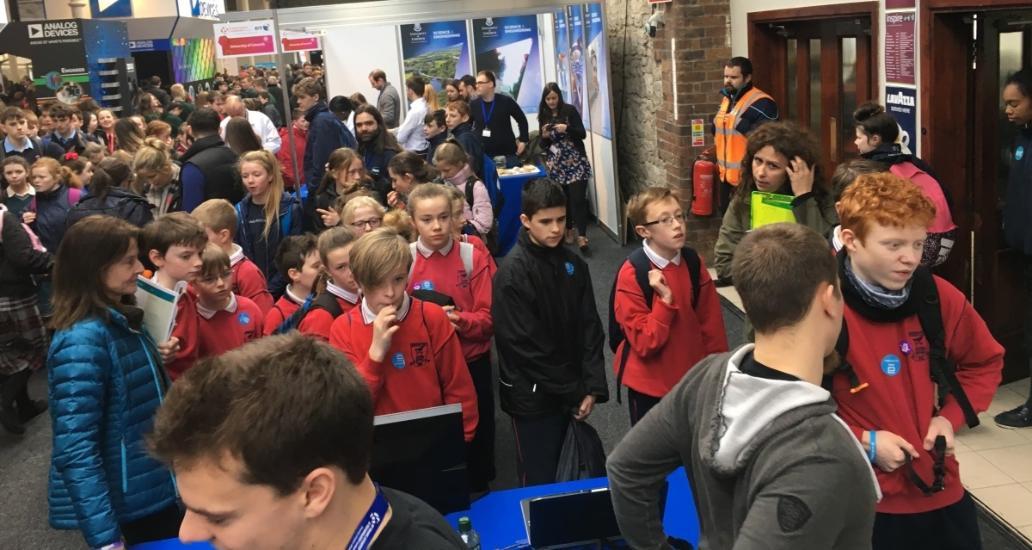
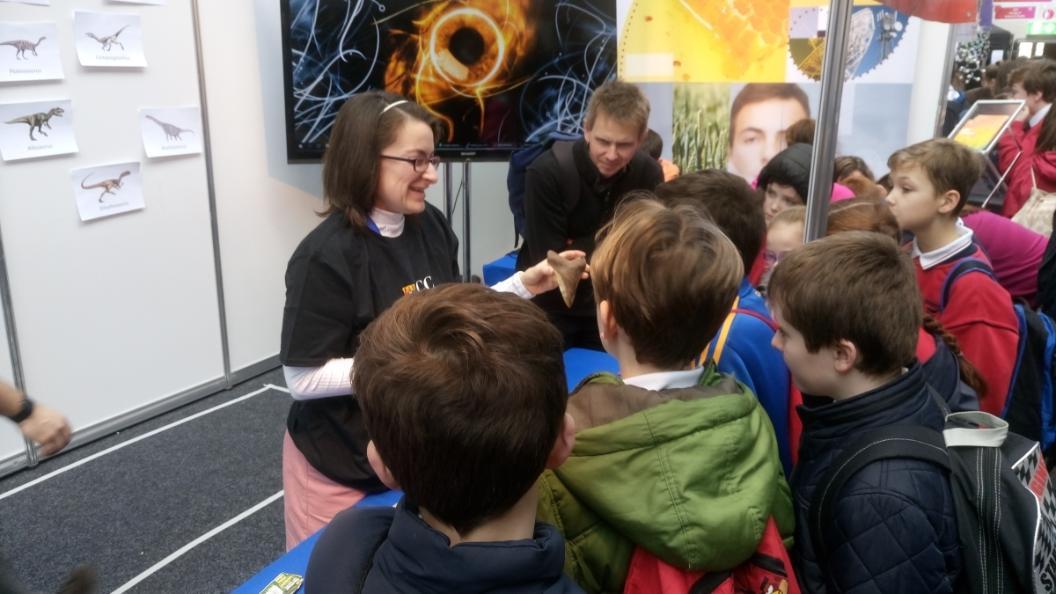
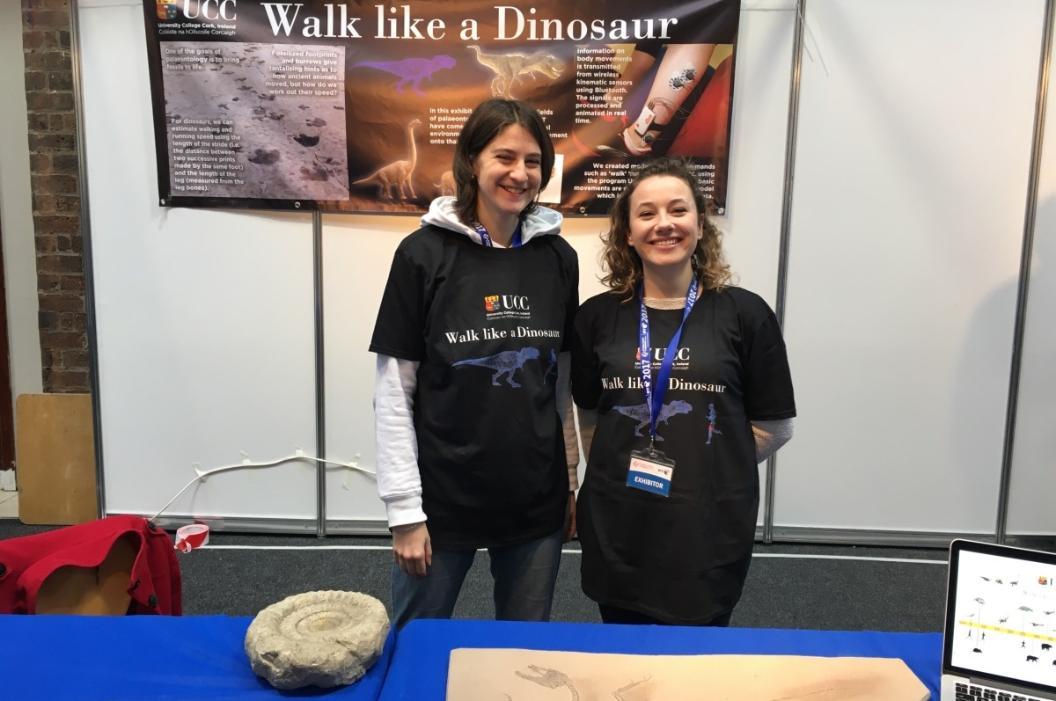
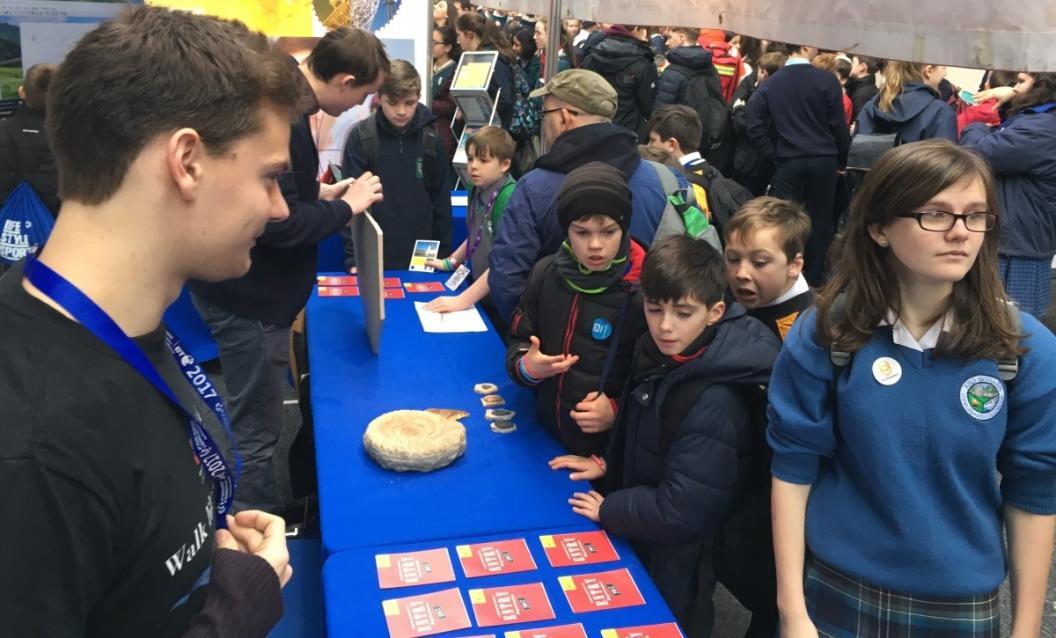
9 Jan 2017
Chris is examining fossils from the Mazon Creek lagerstätte, Illinois.
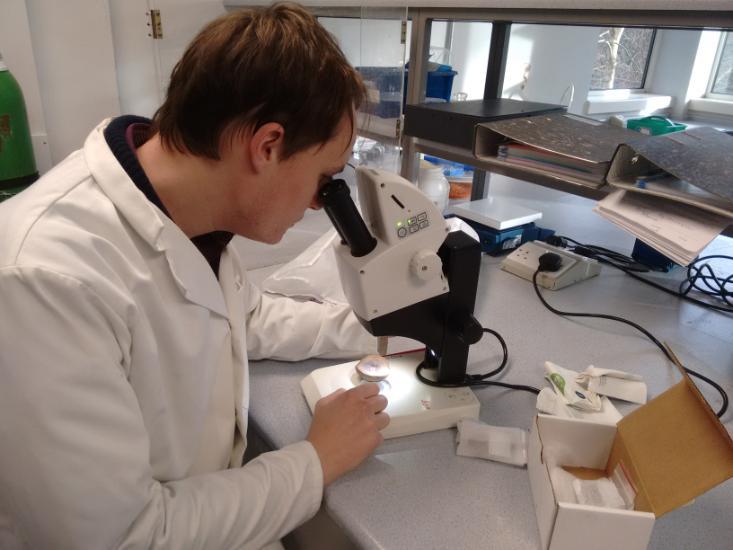
3 Jan 2017
Giliane is cutting ultra-thin sections of dinosaur samples with an ultramicrotome for TEM observation!
